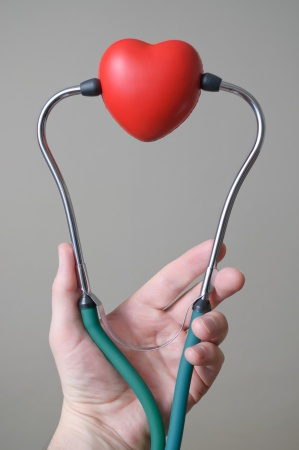 One of the cornerstones of living well after retirement is eating for a healthy heart. According to the Centers for Disease Control and Prevention, heart disease is the leading cause of death in people over the age of 65, and high blood pressure, also known as hypertension, is the leading cause of cardiovascular disease worldwide. High blood cholesterol levels also contribute greatly to heart disease.
One of the cornerstones of living well after retirement is eating for a healthy heart. According to the Centers for Disease Control and Prevention, heart disease is the leading cause of death in people over the age of 65, and high blood pressure, also known as hypertension, is the leading cause of cardiovascular disease worldwide. High blood cholesterol levels also contribute greatly to heart disease.
But you can help decrease your risk by developing a heart-conscious diet. In fact, eating well is one of the American Heart Association’s “Simple 7” heart health factors.
Eating for a healthier heart does two very important things for your health: it lowers your blood pressure and reduces your blood cholesterol levels. Fortunately, you can reduce your risk for cardiovascular disease by sticking to a heart smart diet that decreases both your blood sodium and blood cholesterol levels.
How to Eat for a Healthier Heart
Keep track of what you eat. A food journal makes it easy to identify the strengths and weaknesses of your current eating habits. You might find that you tend to make healthy food choices in the morning, for example, but sneak in a few unhealthy snacks just before bedtime.
A food journal can also help you calculate your daily intake of sodium and cholesterol. Read package labels to determine the sodium and cholesterol content per serving and jot down your intake as you eat each meal. Add up the totals at the end of each day.
People over the age of 50 should reduce sodium intake to 1,500 mg per day, according to the U.S Department of Health and Human Services, and people of all ages should try to reduce dietary cholesterol intake to less than 300 mg per day. Packaged food contains a large amount of sodium and cholesterol, even in food that does not taste particularly salty or fatty, so if you eat a lot of ready-to-eat meals you’re probably getting too much of each.
Stay on Course by Planning Ahead
Stock your pantry and refrigerator with heart healthy foods. Buy less junk food and more fresh vegetables and fruit. Be sure to purchase low sodium, fat free snacks to satisfy cravings.
Purchase heart healthy basics, such as low-sodium soup, canned tuna fish, bags of frozen fruit and vegetables, frozen or bottled 100% juice, low-fat milk, and low-sodium spaghetti sauce in a jar. If you need more shopping tips, the National Institute on Aging provides a grocery list filled with smart food choices for healthy aging.
Always buy heart healthy foods that you enjoy. You are more likely to accomplish your goals of healthy eating and living well if you eat foods you like, surround yourself with friends, and engage in hobbies that satisfy you.
The DASH to Heart Health
The DASH eating plan includes all the food groups for well-rounded nutrition but emphasizes heart smart foods that lower blood pressure and reduce blood cholesterol levels. DASH stands for Dietary Approaches to Stop Hypertension. This diet emphasizes vegetables, fruits, and fat-free or low-fat dairy products, and includes whole grains, fish and poultry, beans, seeds and nuts while limiting salt, sugar and red meats.
Your food journal will come in handy with the DASH eating plan that says, based on a 2,000 calorie per day diet, you should get 27 percent of your calories from total fat and 6 percent from saturated fat, 18 percent of your calories from protein and 55 percent from carbohydrates. The DASH eating plan restricts cholesterol to only 150 mg per day and 1,500 mg of sodium for seniors.
It may not be necessary for you to keep such careful track of your eating habits, depending on your overall heart health. Most people can enjoy the benefits of living well by simply making a more conscious effort to opt for fresher, more nutritious foods over obvious junk foods.












